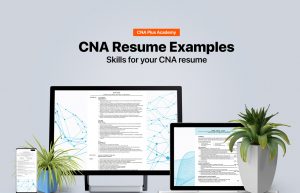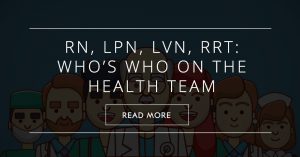- If you didn’t write it down, it didn’t happen
- Date, time, and sign every entry
- Chart care as soon as possible after you give it
- Write legibly every time
- Be systematic
- Be accurate
- You absolutely must be objective
- If you notify the nurse of something important, include it in your entry
- Use only abbreviations approved by your facility
- Never change what you have charted
- Don’t chart for someone else or let anyone else chart for you
One of the most critical responsibilities of all health care professionals is producing proper documentation. Documentation, also called charting, is a clear and accurate method of keeping track of everything that happens to each patient. It is a part of the CNA job description, a way to communicate with other team members about the patient so the team can plan for and provide the best care.
Documentation has other important functions, as well:
- It creates a permanent record of the patient’s health care.
- It serves as proof of care and services for billing the insurance company.
- It can be used as evidence in a court of law.
As a CNA, you probably spend more time with patients than any other professionals do, so your charting is crucial. Documentation is not difficult, but it must be done properly.
Documentation is not difficult, but it must be done properly.
What do CNAs document? Plenty!
- Level of consciousness or alertness
- Measurements of vital signs
- Height and weight
- Intake and output
- Bowel elimination
- Appetite and food intake
- Skin: color, condition, integrity
- Activities and care: ambulation, turning and positioning, range of motion, catheter care, unsterile bandage changes, hot or cold compresses, bathing, etc.
- Patient’s response to activities and care
- Significant statements from the patient
- Conversations you have with other members of the health care team
There are Eleven Golden Rules of Documentation. They apply to every professional who makes entries in a patient’s medical record. Let’s review them:
Eleven Golden Rules of Documentation
- 1
If you didn’t write it down, it didn’t happen.
You’ve probably already heard this: “If you didn’t write it down, it didn’t happen.” This statement is one of the most important in health care. Failing to chart care properly may have two dangerous consequences. First, there will be no proof that a treatment or medication was given. Second, as a result, the treatment or medication may be given twice. Either consequence may be considered malpractice. Therefore, if you do it, chart it!
If you do it, chart it.
- 2
Date, time, and sign every entry.
If your facility uses electronic health records, this information will be automatically entered and unalterable. If your facility uses paper charts, you will write this information for each entry.
- 3
Chart care as soon as possible after you give it.
(Ideally, you should chart it immediately, but in practice, that is usually difficult.) Why must you be so prompt? Because once it’s entered in the chart, no one will doubt that the care has been given and give it again. Patients don’t always tell someone that their dressing was just changed or that they just got back from a walk. Never chart care before you give it. Not only is this illegal, but if you forget to give the care or something else happens, it will count as a false entry.
- 4
Write legibly every time.
As electronic health records become more common, written documentation will decrease. But it’s likely that the patient’s chart will always include paper forms or other written items. If your note can’t be read, it won’t do any good.
If your note can’t be read, it won’t do any good.
- 5
Be systematic
Always chart the same way. For example, you might choose to always use a head-to-toe method. You’ll begin with the patient’s level of consciousness and vital signs. Then you’ll chart your observations, care given, and activities. You’ll be less likely to skip something if you always do your charting the same way.
- 6
Be accurate.
Always review your entry before you sign it. Did you include everything? Is the spelling correct? Is the entry in the correct patient’s chart? To include a statement from a patient, use quotation marks and record it verbatim. Two examples:
Patient stated, “This is the worst pain I’ve ever had.”
Patient stated, “I’m so depressed. I want to go home.” - 7
You absolutely must be objective.
Do not record your opinions. Use precise terminology and accurately describe what you have observed. For example, you can document that the patient’s wound is red and warm with white secretions. You cannot document that the wound is infected, because that conclusion would be beyond the scope of CNA practice. As another example, it’s fine to chart that a patient is complaining of severe pain or saying that his or her level of pain is 9 out of 10, but not that the patient has a low tolerance for pain or that he or she is childish.
Do not record your opinions.
- 8
If you notify the nurse of something important, include it in your entry.
For example, suppose you observe that the skin over a patient’s sacrum is red and warm to the touch. Of course, you will tell the nurse immediately. Write it in the chart also. If you report something about the patient to other team members, note that as well. You might be at the patient’s bedside when the physician comes in. You can let the physician know that the patient complained of pain all night.
- 9
Use only abbreviations approved by your facility.
Every facility has a list of approved abbreviations, which can usually be found in the policy manual. There may also be a list of “Do Not Use” abbreviations. You must follow the policy even if you used different abbreviations at another job. If necessary, copy the list and keep it with you.
- q
Never change what you have charted.
Never. Once an entry is made, it must be permanent. Electronic health records do not permit changes, but paper charts must not be altered either. If you make a mistake, follow your facility’s policy for correction. Many facilities will accept a single line through the mistake with the date, the time, and your initials. Never erase, black out, or use correction fluid.
- w
Don’t chart for someone else or let anyone else chart for you.
When things are busy or others are way behind, you may be tempted to help, especially if nothing new has happened to the patients. But it must not be done. It’s illegal and unethical. Period.
The patient’s medical record is the only place that legally holds the patient’s information. Documentation is not difficult, but it must be done properly. Your charting is just as important as that of every other member of the health care team. In every shift, your observations provide a baseline of each patient’s status and can be the key to noticing a change in the patient’s condition. Remember that your patients are counting on you, so take pride in your charting.
 By
By 



